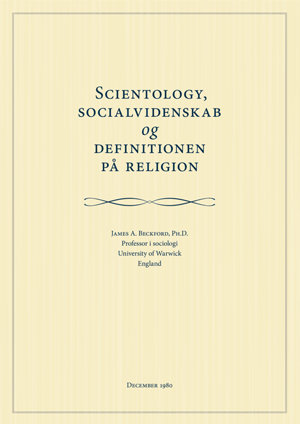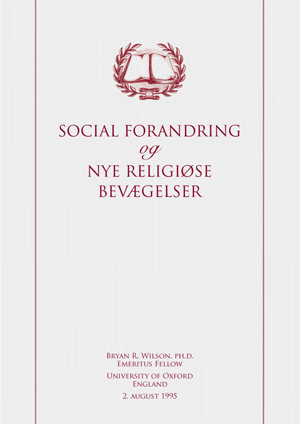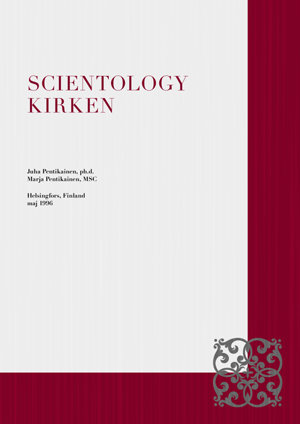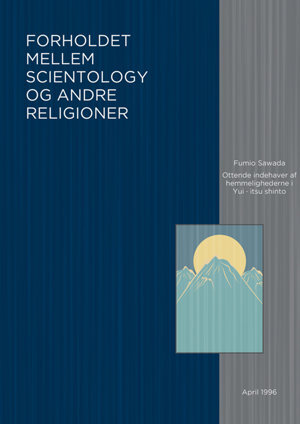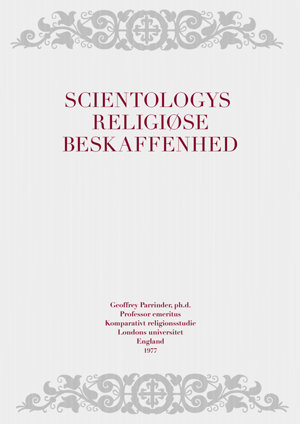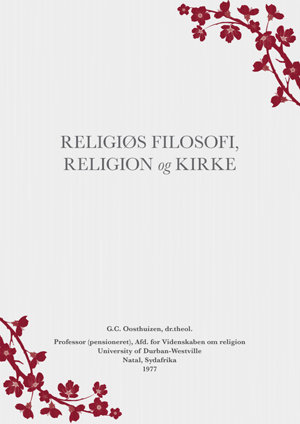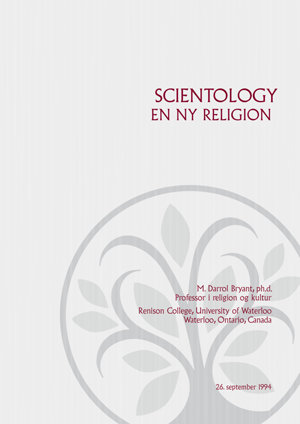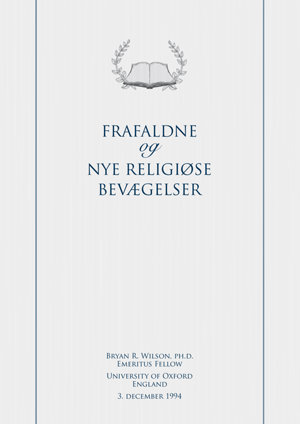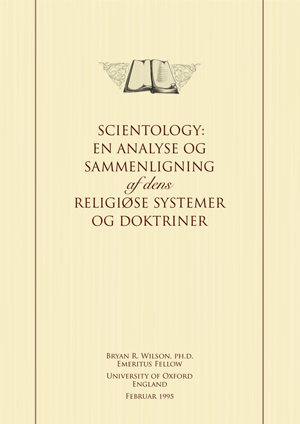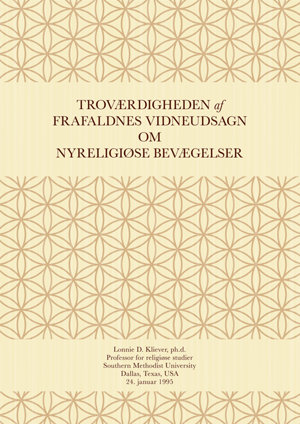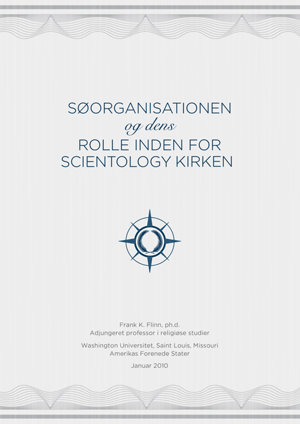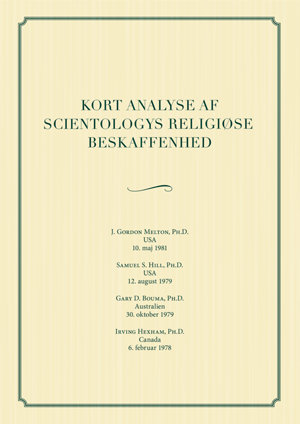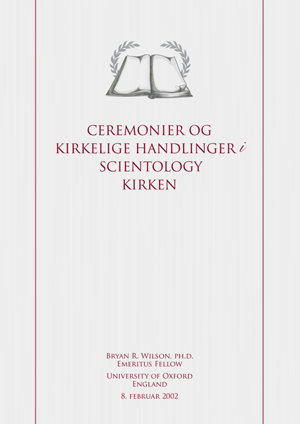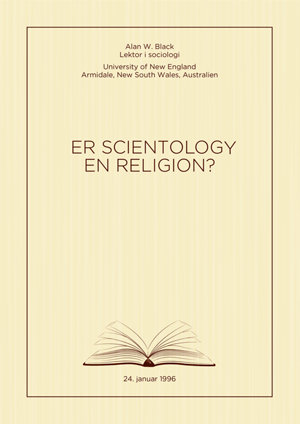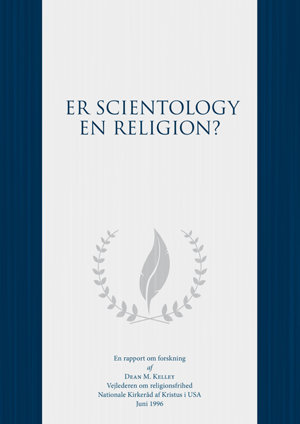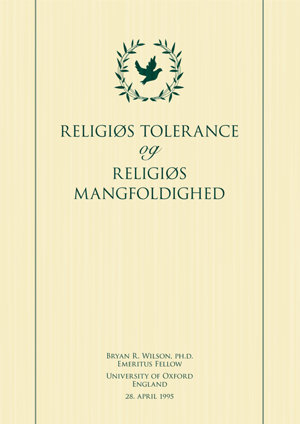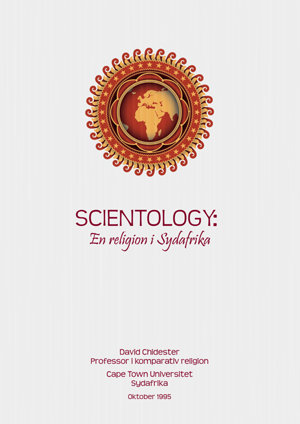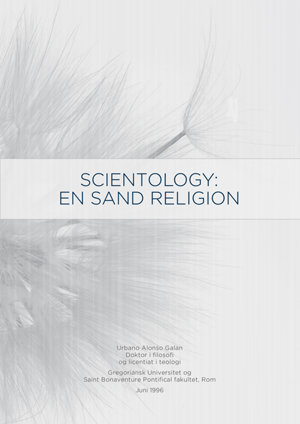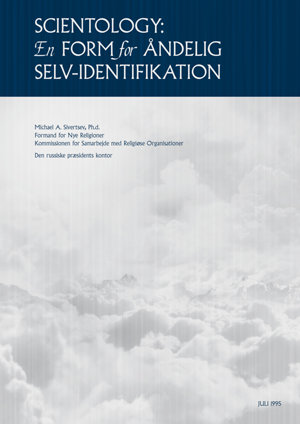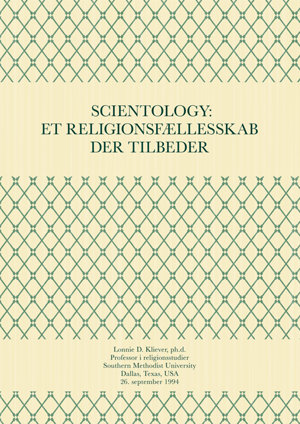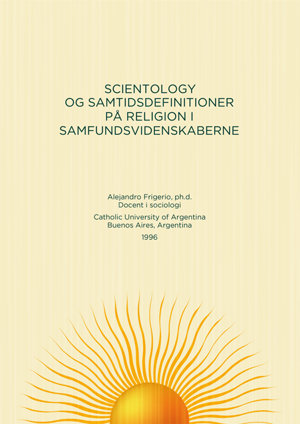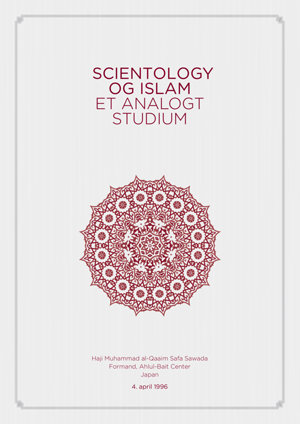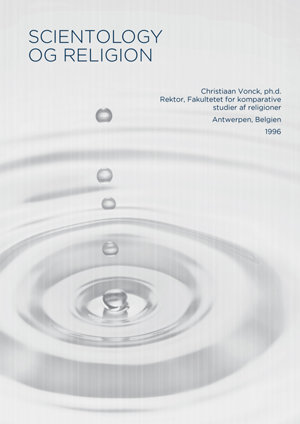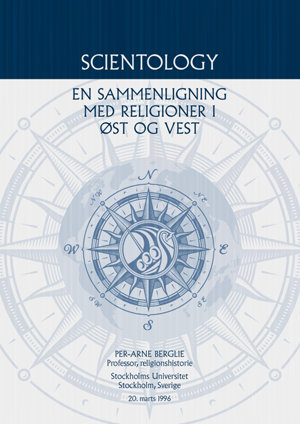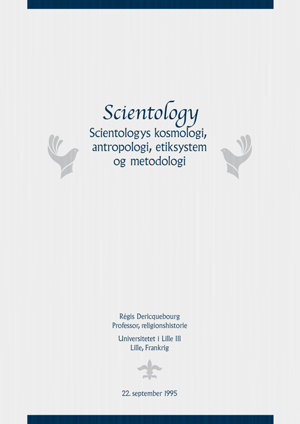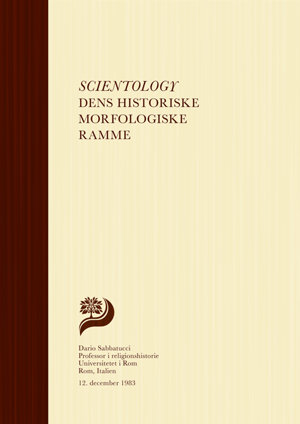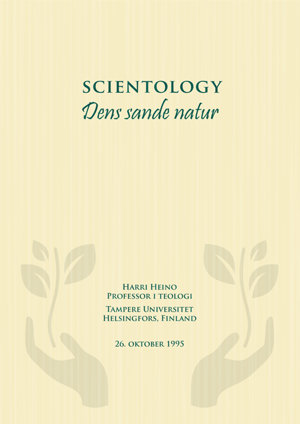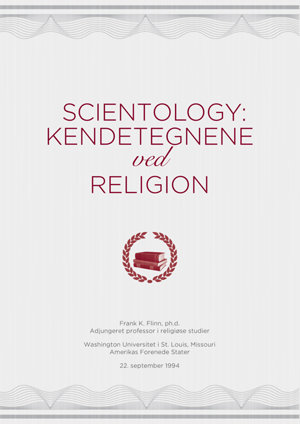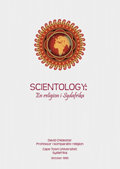1. Scientology Kirken, En beskrivelse af Scientology religionen (Los Angeles: den Internationale Scientology Kirke, 1993): 2.
2. E. B. Tylor, Primitive Culture, 2 bind (London, John Murray, 1920): I:424, Emile Durkheim, The Elementary Forms of the Religious Life, oversat. Joseph Ward Swain (New York: The Free Press, 1965): 62. En nyttig multidimensional ”vejviser” for studiet af religion er blevet udviklet af Ninian Smart i et antal publikationer, herunder The Religious Experience of Mankind (Glasgow: Collins, 1971), The Science of Religion and the Sociology of Knowledge (Princeton: Princeton University Press, 1973), The Phenomenon of Religion (London: Macmillan, 1973), og Worldviews: Crosscultural Explorations of Human Beliefs (New York: Charles Scribners, 1983). For yderligere diskussion om at definere religion, se David Chidester, Gordon Mitchell, Isabel Apawo Phiri og A. Rashied Omar, Religion in Public Education: Options for a New South Africa, 2. udg. (Cape Town, UCT Press, 1994).
3. Emile Benveniste, Indoeuropæiske sprog og samfund (oversat). Elizabeth Palmer (London: Faber og Faber, 1973, oprindelige udgave 1969): 522.
4. J. T. van der Kemp, ”An Account of the Religion, Customs, Population, Government, Language, History, and Natural Productions of Caffraria,” Transactions of the {London} Missionary Society, Vol. 1 (London: Bye & Law, 1804): 432.
5. W. M. Eiselen, ”Geloofsvorme van Donker Afrika,” Tydskrif vir Wetenskap en Kuns 3 (1924/25): 84.
6. Peter Harrison, ’Religion’ and the Religions in the English Enlightenment (Cambridge: Cambridge University Press, 1990): 39.
7. David A. Pailin, Attitudes to Other Religions: Comparative Religion in Seventeenth- and Eighteenth-Century Britain (Manchester: Manchester University Press, 1984).
8. F. Max Müller, Introduction to the Science of Religion (London: Trübners, 1873).
9. Udover arbejdet fra Harrison og Pailin anført ovenfor er senere beretninger om historisk fremkomst af moderne udtryk ”religion” og ”religioner” også blevet givet af Peter Byrne, Natural Religion and the Nature of Religion: The Legacy of Deism (London: Routledge, 1989), J. Samuel Preus, Explaining Religion: Criticism and Theory from Bodin to Freud (New Haven: Yale University Press, 1987); Eric J. Sharpe, Comparative Religion: A History, 2. udg. (La Salle, Illinois: Open Court, 1986); og Michel Despland og Gerard Vallée (red.) Religion in History: The Word, the Idea, the Reality (Waterloo, Ont.: Wilfrid Laurier University Press, 1992). For grundig baggrund, se Wilfred Cantwell Smith, The Meaning and End of Religion (New York: Macmillan, 1962): Michel Despland, La religion en Occident: Evolution des idées et du vécu (Montreal: Fides, 1979), og Ernst Feil, Religion: Die Geschichte eines neuzeitlichen Grundbegriffs vom Frühchristentum bis zur Reformationen (Göttingen: Vandenhoeck og Ruprecht, 1986). For en analyse af den historiske produktion af udtrykkene ”religion” og ”religioner” i det sydlige Afrika, se David Chidester, Vilde systemer: kolonialisme, religion og komparativ religion i det sydlige Afrika (Charlottesville: University Press Virginia, kommende 1996).
10. Om antikultbevægelsen, se David Bromley og Anson D. Shupe, The New Vigilantes: Deprogrammers, Anti-Cultists, and the New Religions (Beverly Hills, California: Sage, 1980). I akademisk analyse kan antikultpåstande dukke op i teoretiske modeller, der skildrer nye religioner som psykopatologi, foretagsomme foretagender eller sociale afvigelser. Se William Sims Bainbridge og Rodney Stark, ”Cult Formation: Three Compatible Models,” i Jeffrey K. Hadden og Theodore E. Long, red., Religion and Religiosity in America (New York: Crossroad, 1983): 35-53.
11. G. P. C. Kotzé, et al., Report of the Commission of Inquiry into Scientology for 1972 (Pretoria: Government Printer, 1973): 208.
12. G. C. Oosthuizen, The Church of Scientology: Religious Philosophy, Religion, and Church (Johannesburg: Church of Scientology, 1975): 11.
13. L. Ron Hubbard, Skabelsen af menneskelige evner: En håndbog for scientologer, 351.
14. Som et eksempel på denne fremgangsmåde se Hendrik Kraemer, The Christian Message in a Non-Christian World (London: Edinburgh House Press, 1938).
15. L. Ron Hubbard, Phoenix-foredragene (Edinburgh: Publications Organization World Wide, 1968): 35.
16. Ibid., 13.
17. Ibid., 11.
18. L. Ron Hubbard, Videnskaben om overlevelse: forudsigelse af menneskelig adfærd, 488.
19. L. Ron Hubbard, Scientology 0-8: Bogen om det grundlæggende, 410.
20. L. Ron Hubbard, Scientology 8-8008, 121.
21. Hubbard, Ceremonies of the Founding Church of Scientology, 7.
22. Jonathan Z. Smith, ”Healing Cults,” New Encyclopaedia Britannica, Macropaedia, vol. 8 (Chicago, 1977): 685.
23. Henry Clarke Warren, trans., Buddhism in Translations (New York: Atheneum, 1979): 405.
24. Morton Bloomfield, The Seven Deadly Sins: An Introduction to the History of a Religious Concept (East Lansing: Michigan State University Press, 1967).
25. På dissonans og harmoni i religiøs etik, se David Chidester, Patterns of Action: Religion and Ethics in a Comparative Perspective (Belmont, Californien: Wadsworth, 1987): 67-105.
26. Hubbard, Videnskaben om overlevelse, 46.
27. Mircea Eliade, Shamanism: Archaic Techniques of Ecstasy, oversat. Willard R. Trask (Princeton: Princeton University Press, 1964).
28. Felicitas Goodman, Ecstasy, Ritual, and Alternative Reality: Religion in a Pluralistic World (Bloomington: Indiana University Press, 1988); Where the Spirits Ride the Wind: Trance journeys and other Ecstatic Experiences (Bloomington: Indiana University Press, 1990).
29. For analyse, der har sået tvivl om påstanden, at nye religioner engagerer sig i ”hjernevask”, se David Bromley og James Richardson, red., The Brainwashing/Deprogramming Controversy: Sociological, Psychological, Legal, and Historical Perspectives (New York: Edwin Mellen Press, 1983), og Dick Anthony, ”Religious Movements and Brainwashing Litigation: Evaluating Key Testimony,” i Thomas Robbins og Dick Anthony, red., In Gods We Trust: New Patterns of Religious Pluralism in America, 2. udg. (New Brunswick, New Jersey: Transaction, 1990): 295-325.
30. Scientology Kirken, Hvad er Scientology?: Den omfattende reference for verdens hurtigst voksende religion (Los Angeles: Bridge Publications): 245.
31. Ibid., 274.
32. Scientology Kirken, Beskrivelse af Scientology religionen, 8.
33. David Chidester, Patterns of Power: Religion and Politics in American Culture (Englewood Cliffs, New Jersey: Prentice Hall, 1988): 239-41.
34. Kotzé, Report of the Commission of Inquiry, 209.
35. Scientology Kirken, Svar på rapporten af Undersøgelseskommission: ”Den manglende rapport” til information for medlemmer af parlamentet (Johannesburg: Scientology Kirken, 1973): 41.
36. Anført sammesteds, 43.
37. Scientology Kirken, Hvad er Scientology?, 527.
38. Scientology Kirken, Vejviser til referencer, Scientology religionen: Svar på spørgsmål, oftest stillede af medier (Los Angeles: den Internationale Scientology Kirke, 1994): 22.
39. Citizens Commission on Human Rights, ”Psykiatri og Sydafrika,” Racisme skabes: Psykiatriens forræderi under dække af hjælp (Los Angeles, CCHR, 1995): 18.
40. Klippies Kritzinger, red., Believers in the Future (Cape Town: World Conference on Religion and Peace, South African Chapter, 1991).
41. William James, The Varieties of Religious Experience (New York: Macmillan, 1961): 393.
42. Roy Wallis, ”Hostages to Fortune: Thoughts on the Future of Scientology and the Children of God,” i David G. Bromley og Phillip E. Hammond, red., The Future of New Religious Movements (Macon, Georgia: Mercer University Press, 1987): 80-84; Robert Ellwood, ”A Historian of Religion Looks at the Future of New Religious Movements,” i ibid., 249-50; Benton Johnson, ”A Sociologist of Religion Looks at the Future of New Religious Movements,” i ibid., 253-56.

